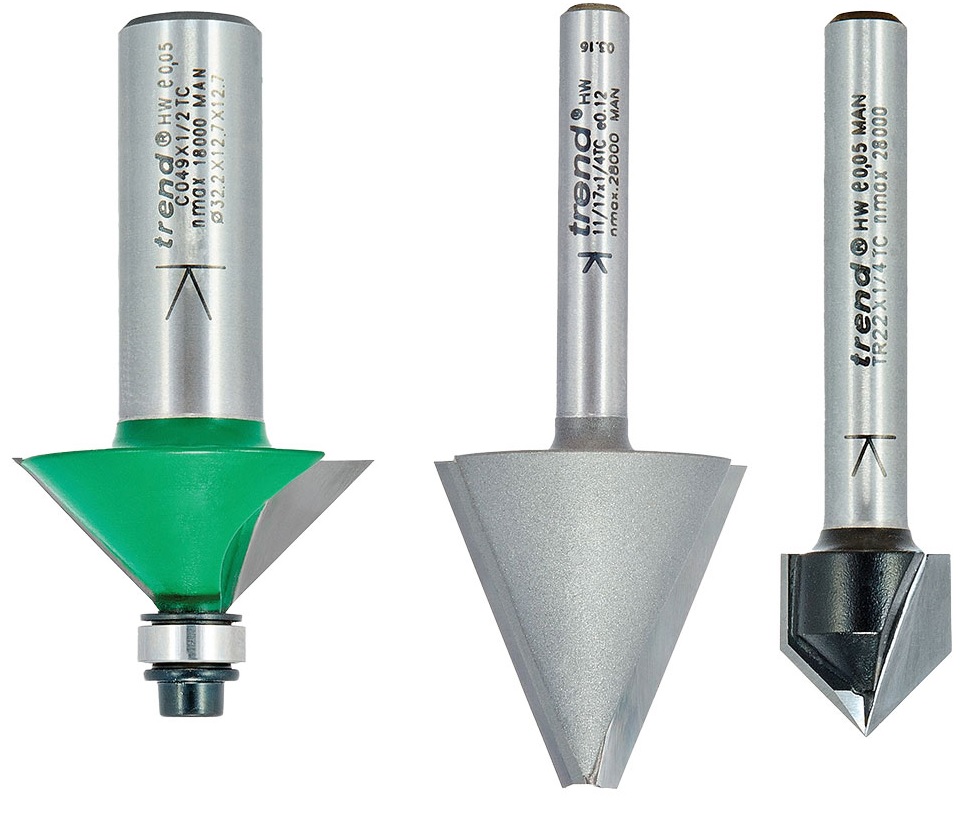✔ Competitive Pricing ✔ Quality Service ✔ Extensive Stock ✔ Experienced Staff
Reset Filter
 Price
PriceChamfer, Bevel and V Groove Router Cutters
A Guide to Chamfer, Bevel and V Groove Router Cutters
Chamfer and bevel cutters are usually self-guided and allow you to very quickly add shape to an otherwise plain corner of the work. The stopped chamfer in particular is a very effective and practical detail. Bevels are not always 45°, though this is the most popular angle.
Chamfers can be used as a decorative edge on timber worktops, furniture legs and rails. They can also be used for removing the arris on posts and rail structures, such as fences, gates and garden furniture. When joining boards edge to edge, abutting edges can be chamfered to produce a v-groove to disguise the glue joint.
Using the other angles you can cut deeper or shallower tapers, or even the accurate angles needed for coopering or laminated work. V groove cutters are mostly unguided and vary in angle from 25 to 60°.
The main uses of the v-cutter are for decorative grooves, fluting, imitation matchlining on panel materials, and free-hand or template letter carving. Light edge chamfering can also be carried out using this cutter on both timber and laminates.
They are used for a variety of purposes from decorative grooving through to relief carving and letter engraving, either freehand or using templates. Small V bits are often referred to as veiners.


No items in this category





 01726 828 388
01726 828 388






